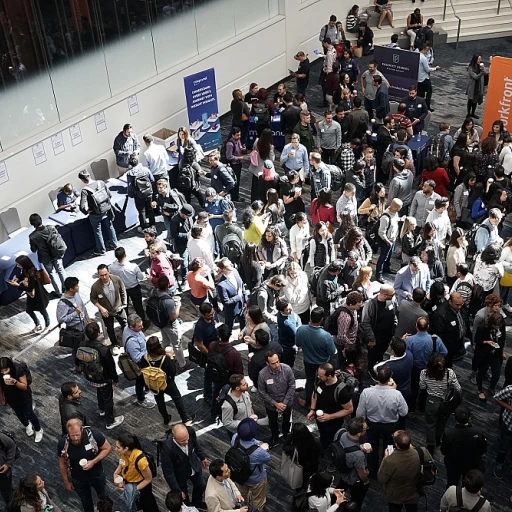
The Heartbeat of Hiring: Key Metrics You Can't Ignore
The Fundamental Forces of Recruitment
In the dynamic world of recruitment, hiring experience metrics represent the heartbeat of your talent acquisition process. These vital indicators not only determine the efficacy of your hiring strategy but also reflect upon your organization's culture and its appeal to potential candidates. Effective hiring goes beyond filling positions; it's about understanding the critical metrics that shape both the process and its outcomes. The importance of these metrics is emphasized throughout our exploration of various factors impacting hiring, such as the cost-effectiveness of recruitment and the overall experience of candidates. When companies focus on prioritizing these metrics, they can refine their efforts and better attract, engage, and retain top talent. This includes paying close attention to figures like application completion rates, candidate conversion rates, and the time-to-fill metric. A seamless symphony of these metrics bodes well for the recruitment process, aligning it with your organizational goals and ensuring that you bring aboard the right people at the right time. However, it's not just about efficiency; it's essential to embrace a strategy that balances both quality and quantity. This ensures you not only attract numerous applications but also secure top-notch candidates that can drive your company towards success. As hiring evolves into a more data-driven discipline, leveraging these metrics becomes increasingly crucial.Time is Money: Measuring the Cost and Efficiency of Hiring
Efficiency in the Hiring Process
In the fast-paced world of recruitment, time is indeed money. One of the most critical aspects of the hiring experience is understanding how efficiently a company can move from identifying a need to having a new employee in place. This efficiency is measured through several key metrics, each shedding light on different facets of the hiring process.
The first metric to consider is time-to-fill, which tracks the number of days it takes to fill a position from the moment a job requisition is opened. This metric is crucial as it directly impacts the company's ability to maintain productivity and meet business goals. A lengthy time-to-fill can indicate potential bottlenecks in the recruitment process, such as a lack of qualified candidates or inefficiencies in the interview process.
Another important metric is time-to-hire, which measures the time from when a candidate applies or is sourced to when they accept the job offer. This metric helps identify how quickly the recruitment team can identify and secure the right talent. A shorter time-to-hire often reflects a streamlined process and a positive candidate experience, which is further explored in the following section on candidate experience.
Additionally, the cost-per-hire metric provides insights into the financial efficiency of the hiring process. It encompasses all expenses associated with filling a position, including advertising, recruitment agency fees, and internal recruitment costs. Monitoring this metric allows organizations to optimize their spending and allocate resources more effectively.
By focusing on these metrics, companies can not only improve their hiring efficiency but also enhance the overall quality of their hires, as discussed in the section on quality over quantity. Ultimately, a data-driven approach to recruitment, as highlighted later in the article, empowers organizations to make informed decisions that benefit both the company and its prospective employees.
Candidate Experience: The Make or Break Factor
The Importance of Crafting a Memorable Journey
A crucial element in hiring experience metrics is the candidate experience. This aspect can truly be the deciding factor for applicants. As organizations strive to attract top talent, it's imperative to remember that each step of the recruitment process reflects the heart and soul of your company. From the initial job posting to the final offer letter, every interaction must be handled with care and professionalism. A positive candidate experience can lead to a variety of tangible and intangible benefits. High-caliber candidates often have multiple opportunities at their fingertips, and their decision can significantly hinge on how appreciated and respected they feel throughout the hiring journey. This goes beyond just polite communication to include how efficient, transparent, and engaging your process is. A streamlined and thoughtful hiring workflow ensures candidates have a memorable experience, directly tying into the quality of hires. Furthermore, a negative experience can reverberate beyond the lost candidate. With the power of social media and review platforms, it only takes one dissatisfied applicant to tarnish your company's reputation. In previous discussions, we've seen how integral metrics like time and cost-efficiency in hiring are to a company's bottom line. Streamlining these can enhance the candidate experience by reducing unnecessary delays and frustrations.Engagement and Empathy: Key Components
Central to crafting this memorable journey are considerations of engagement and empathy. These are not merely buzzwords but foundational pillars in building trust and loyalty. Candidates appreciate transparency and clear communication regarding the process and their status within it. Additionally, feedback at different stages can transform the experience from a transactional one into a personal connection with your brand. To further hone in on enhancing the candidate journey, personalized touches such as timely responses, meaningful interactions during interviews, and genuine interest in their career goals can set your process apart. This reinforces the overarching theme that recruitment is not merely a numbers game - it's about quality over quantity, as previously discussed. For companies looking to refine their approach, incorporating insights from seasoned industry professionals found in resources like this fresh approach to recruitment can be invaluable. This can provide fresh perspectives and methodologies that place candidate experience at the forefront of hiring strategies. Ultimately, creating a positive candidate experience not only enhances the potential for securing top-tier talent but also bolsters the overall perception of your organization in the competitive job market.Quality Over Quantity: Ensuring a Good Hire
Striving for Excellence: The Importance of Quality Hires
In the vast landscape of recruitment metrics, ensuring a high-quality hire is akin to discovering a precious gem. While quantity and speed often dominate the conversation, focusing on the caliber of the candidates can ultimately make or break the success of an organization. A poor hiring decision can lead to increased turnover rates, decreased morale, and substantial costs.
To guarantee quality over mere numbers, a company must integrate a holistic view of its hiring metrics, balancing efficiency with effectiveness. This involves analyzing candidate performance and comparing it with the initial skill set and experience requirements. A promising approach is to leverage employee retention rates and performance reviews as key indicators of a successful hire.
Enhancing the quality of hires is intricately linked to other aspects of the recruitment process. For instance, efficient processing outlined in earlier discussions directly impacts the probability of engaging with better candidates. Likewise, a robust candidate experience can significantly amplify the likelihood of securing top talent who align with the company’s values and culture.
In addition to these, feedback from hiring managers and recruiters plays a vital role in achieving quality hires. Understanding their satisfaction levels, as touched upon in other sections, can offer valuable insights into the nuances of the hiring process, identifying areas that need refinement.
By maintaining focus on quality metrics, organizations can ensure they are not just filling positions, but are welcoming skilled individuals who are poised to contribute positively to the team's success. Ultimately, this aligns with a strategic approach where every potential hire builds on the foundation of organizational growth and stability.






